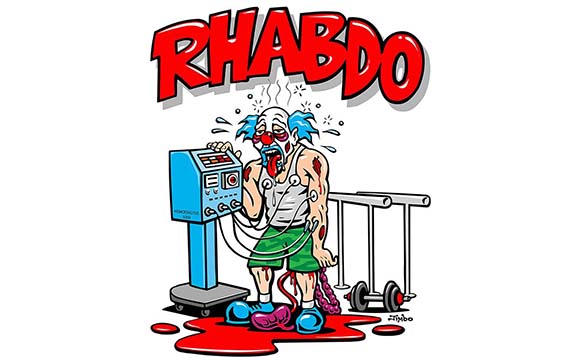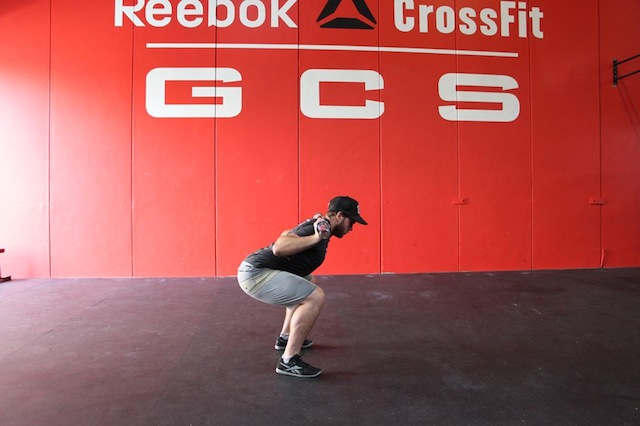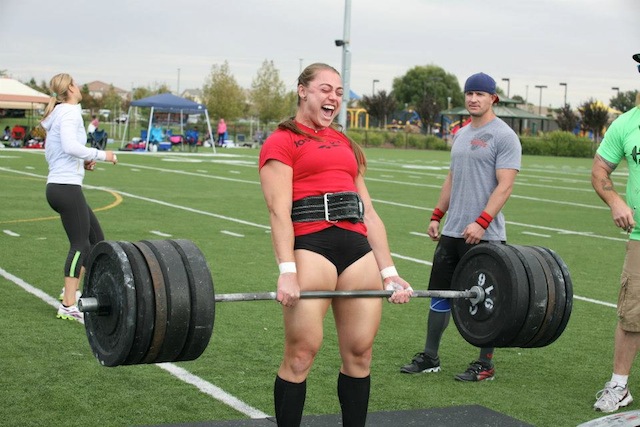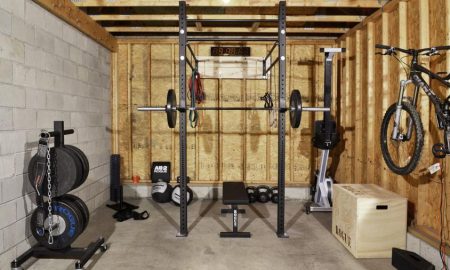
CrossFit has been called a “killer” workout program by its founder Greg Glassman. So if you find that your back is ‘killing’ you after a CrossFit session, you’re not alone. New studies report that spinal injury rates in CrossFit athletes is 20%, with lower back pain the most common complaint.
What was that? CrossFit causes back pain?… Well, if so, what can we do about it?
Today’s “Workout of the Day” is learning about back pain as a CrossFit athlete:
Overview of CrossFit
As you know, CrossFit is a workout program that emphasizes differing exercises that increase in intensity over time. CrossFit is not for the weak. In fact, its “killer” mantra often attracts the country’s fittest men and women, including Olympians, police, firefighters and military personnel.
Common CrossFit spinal injuries
There are two categories of back pain that CrossFit athletes typically experience. Both are often cited in research studies about CrossFit spinal injuries and have unique symptoms and consequences.
Lower back pain
Lower back pain is characterized by a dull ache or stabbing sensation in your lumbar region. This pain is commonly caused by overextended muscles, whether during exercise or after lifting something heavy. For CrossFit athletes, this pain may become chronic if it continues for over three months. In fact, spinal injuries for CrossFit athletes last an average of 6 months, making it a chronic and serious medical condition.
Rhabdomyolysis (Rhabdo)
Rhabdomyolysis, or rhabdo, is an urgent medical condition that results from muscle fibers dying and floating into the bloodstream. However, rhabdo often feels like extreme muscle pain in your lower back. If you’re experiencing lower back muscle pain and weakness and your urine is dark red or brown, you may have rhabdo. You should seek urgent medical care, as rhabdo can cause kidney failure and even death.
For CrossFitters, rhabdo is caused by extreme muscle strain. Specifically, there’s one case of rhabdo reported for every 101 CrossFit participants. The more muscle mass the person has, the more serious the condition. Other causes are:
- Use of drugs or alcohol
- High body temperature
- Muscular disease
- Viral infections
- Bacterial infections
Generally speaking, if you’re experiencing lower back pain after a CrossFit workout, be sure it’s not rhabdo. The most telling sign is dark red or brown urine. New studies show that this condition is a cause for concern in CrossFitters, so consult a doctor immediately if you think you may be experiencing rhabdo.

CrossFit risk factors for lower back pain
Is CrossFit bad for your back? Not necessarily, but it definitely presents some risks for lower back pain. Let’s go over the reasons why CrossFitters might struggle with lower back pain below.
- Too much, too soon
The biggest issue with CrossFit is its intensity. CrossFit focuses on high-intensity exercise. For newbies, CrossFit can be especially risky because of the desire to do more and more right away. CrossFit also proposes a “no pain, no gain” style of exercise that may make CrossFitters more prone to injury.
Preventative strategy: Know your body’s limitations. If you adore CrossFit, just be sure to know when to stop. Try not to push yourself too far or put yourself in a position where you could get injured.
- Lack of proper form
Sometimes during CrossFit workouts, athletes compromise form for speed. When this occurs, this lack of proper form is known to cause injuries. In terms of lower back pain, you could overextend your muscles if you’re not using the equipment properly, or doing reps with correct form.
Preventative strategy: Get a personal CrossFit trainer and focus on correct form. Research studies suggest that CrossFit athletes saw decreased injury rates when trainers or coaches guided them through the workout and showed them how to do certain exercises. Make sure you pay attention to form, especially when starting CrossFit.
- “Killer” workouts
Because CrossFit focuses on extremely intensive activity, its “killer” workouts have been cited as the underlying cause for emergency room injuries, especially rhabdo. In particular, studies on CrossFit injuries suggest that there are five workouts that are extremely difficult and cause the most injuries:
- Fran
- Murph
- Fight Gone Bad
- Helen
- Filthy 50
These workouts have often been cited as the trigger for rhabdo. The top workout, Fran, accounted for almost half of the participants’ responses regarding difficulty.
Preventative strategy: Maybe take it easier when participating in “killer” workouts such as the five listed above. Or at least know your body and whether you’re physically prepared to participate in these extremely intensive workouts. Don’t push yourself too much!
-
Dangerous powerlifting
New studies show that lower back pain in CrossFitters is most often a result of powerlifting. These powerlifting movements cause overextension of lumbar muscles, leading to pain and injury.
Preventative strategy: As suggested by The Rx Review, scale your workout. Don’t overlift weights or try to impress others. You should choose the weight that’s right for you. It shouldn’t be too light or too heavy, but a doable challenge.
- Too much focus on aerobic exercise
Northwestern University researchers suggest that CrossFit focuses too much on aerobic exercise and not enough on core strength. While aerobic exercise is good for you, CrossFit doesn’t have the kind of core strengthening needed to support workouts and prevent injury.
Preventative strategy: Build your core. Core strength is a key component in preventing back pain. By strengthening your core, you can help take weight off your back by engaging your abs instead.

Other risk factors for lower back pain
Besides the five risks above, there are a few other indirect risk factors that are important to note for CrossFit lower back pain, including:
History of joint injury
Another finding in CrossFit injuries is that those with a history of joint injury were 3.75 times more likely to become injured during CrossFit. If you have a history of joint injury, you might want to reconsider whether CrossFit is right for you. At a minimum, you should be aware of your body’s limitations when it comes to certain CrossFit exercises.
Weekend warrior lifestyle
Studies suggest that being a “weekend warrior” can put you more at risk of lower back pain. “Weekend warriors” have extreme lifestyles: days where they’re completely inactive and weekends where they’re extremely active. This kind of back-and-forth is more likely to give your back pain. Try to create a balanced lifestyle where you avoid being sedentary on your days off from CrossFit.
Other preventative strategies
Finally, if you love CrossFit, there are three other preventative strategies that you might adapt to prevent lower back injury:
- Warm-up and cool-down: Be sure to stretch before starting the intensity of CrossFit workouts. Show up earlier to get the warm-up exercises you need to keep your lower back healthy.
- Rest up: You need at least 8 hours of restorative sleep to stay healthy. CrossFit can make you especially achy, so it’s important to let your body heal through sleep.
- Focus on yourself: Try not to get caught up in impressing others. Focus on your own exercise and make sure you listen to your body. After all, it’s your health.

Final takeaway
CrossFit adds a risk factor to your lower back pain, but with the preventative strategies we’ve outlined, you can lower your risk and continue to enjoy CrossFit injury-free. Specifically, it’s vital that you take charge of your health and know when to take your workout down a level.
If you continue to suffer from lower back pain, you may consider consulting a chiropractor near you. A chiropractor can help you put together a care plan involving diet, exercise, supplements, as well as adjustments and therapies to reduce lower back pain and recover from your injury.
We hope you stay strong and injury-free with our preventative strategies!
Written by Dr. Brent Wells:
Dr. Brent Wells is a graduate of the University of Nevada where he earned his bachelor of science degree before moving on to complete his doctorate from Western States Chiropractic College. He founded Better Health Chiropractic in Anchorage. He became passionate about being a chiropractor after his own experiences with hurried, unprofessional healthcare providers. The goal for Dr. Wells is to treat his patients with care and compassion while providing them with a better quality of life through his professional treatment.


















Follow Us